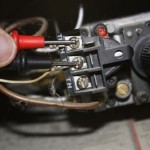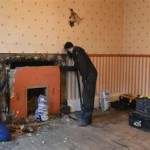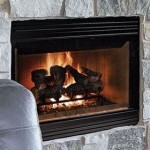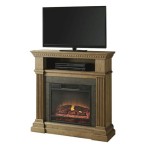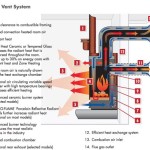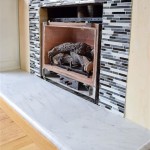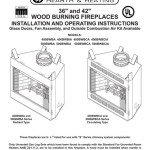Best Energy-Efficient Electric Fireplace Heaters
Electric fireplace heaters offer a convenient and relatively clean source of supplemental heat, providing both ambiance and warmth to a room. Choosing an energy-efficient model can significantly reduce energy consumption and lower utility bills, making them a practical alternative to traditional heating methods. This article explores the factors that contribute to the energy efficiency of electric fireplace heaters, highlighting key features, technologies, and selection criteria for consumers seeking the most cost-effective options.
The energy efficiency of an electric fireplace heater is primarily determined by its ability to convert electrical energy into heat effectively. Unlike gas or wood-burning fireplaces, electric models do not require venting, eliminating heat loss through a chimney. However, the efficiency can still vary depending on the heating technology used, the quality of insulation, and the presence of energy-saving features.
Understanding Electric Fireplace Heater Technologies
Different types of electric fireplace heaters utilize varying technologies to generate heat, each with its own efficiency characteristics. The most common types include infrared, convection, and fan-forced heaters. Understanding the nuances of these technologies is crucial for making an informed decision.
Infrared heaters use infrared radiation to directly heat objects and people in the room, rather than heating the air itself. This targeted heating approach can be more efficient, as it reduces energy waste from heating unoccupied areas. Quartz and ceramic infrared heaters are popular choices. Quartz heaters offer rapid heating, while ceramic heaters are known for their even heat distribution and ability to retain heat for a short period after being switched off. Some infrared models also incorporate zone heating capabilities, allowing users to direct heat to specific areas within a room.
Convection heaters work by warming the air that circulates around them. Cool air is drawn into the heater, warmed by a heating element, and then released back into the room. While convection heaters can effectively heat an entire room, they may be less energy-efficient compared to infrared heaters, particularly in larger spaces. They are more susceptible to heat stratification, where warmer air rises to the ceiling while cooler air remains near the floor. Some convection models include a thermostat control to maintain a consistent room temperature, which can help minimize energy consumption.
Fan-forced heaters are similar to convection heaters, but they use a fan to accelerate the circulation of warm air. The forced air circulation allows for faster and more even heating of a room. While this can be beneficial in quickly warming a space, the constant operation of the fan can consume additional energy. The efficiency of fan-forced heaters depends on the design of the fan and the effectiveness of the heating element.
Key Features That Enhance Energy Efficiency
Beyond the core heating technology, several features can contribute to the energy efficiency of an electric fireplace heater. These features allow for greater control over energy usage and optimize heating performance.
Adjustable Thermostat: A thermostat allows users to set a desired room temperature, and the heater will automatically cycle on and off to maintain that temperature. This prevents the heater from running continuously, reducing energy waste. Some models offer programmable thermostats, allowing users to set different temperature settings for different times of the day or week.
Zone Heating: Some electric fireplaces are designed for zone heating, allowing users to direct heat to specific areas of the room. This is particularly useful in larger rooms or open-plan spaces, where heating the entire area may not be necessary. Zone heating can significantly reduce energy consumption by focusing heat where it is needed most.
LED Flame Effect: Modern electric fireplaces often feature realistic flame effects that enhance the ambiance without contributing to heat production. LED technology is highly energy-efficient, consuming minimal electricity compared to traditional lighting methods. The flame effect can be operated independently of the heating function, allowing users to enjoy the visual appeal of a fireplace without generating heat during warmer months.
Timer Function: A timer function allows users to set a specific duration for the heater to operate. This can be useful for preventing the heater from running unnecessarily, such as when leaving the room or going to sleep. Some models offer multiple timer settings, allowing for greater flexibility in scheduling heating cycles.
Selecting An Energy-Efficient Electric Fireplace Heater
Choosing the right electric fireplace heater involves careful consideration of factors such as room size, heating needs, and energy-saving features. The following guidance can assist in selecting the most energy-efficient option.
Room Size: The heating capacity of an electric fireplace heater is typically measured in British Thermal Units (BTUs) or wattage. Smaller rooms require less heating power than larger rooms. Carefully assess the size of the room to be heated and choose a heater with an appropriate BTU or wattage rating. Over-sizing the heater can lead to unnecessary energy consumption, while under-sizing it may result in inadequate heating.
Heating Needs: Consider the primary purpose of the electric fireplace heater. If it is intended for supplemental heating in a room that is already partially heated, a lower wattage model may suffice. If it is intended to be the primary heating source in a room, a higher wattage model may be necessary. Also, evaluate the insulation of the room. Poorly insulated rooms will require more heating power to maintain a comfortable temperature.
Energy Efficiency Ratings: Look for energy efficiency ratings, such as Energy Star certification, when available. These ratings indicate that the heater meets certain energy efficiency standards. While Energy Star ratings are not commonly applied to all electric fireplace heaters, comparing the wattage and features of different models can provide insights into their relative energy efficiency.
Read Reviews: Before making a purchase, read online reviews from other users. Reviews can provide valuable insights into the real-world performance and energy efficiency of different electric fireplace heaters. Pay attention to comments about heating effectiveness, energy consumption, and features such as thermostat accuracy and zone heating capabilities.
The selection of an energy-efficient electric fireplace heater hinges on a comprehensive understanding of available technologies, key features, and individual heating needs. By carefully evaluating these factors, consumers can make an informed decision that minimizes energy consumption and maximizes heating comfort.

The Best Electric Fireplaces In 2024 Popular Science

ᑕ❶ᑐ Energy Efficient Electric Fireplaces For Your Home

Top Electric Fireplace Brands Sylvane
The 6 Best Electric Fireplace Heaters Of 2024

The Best Electric Fireplaces In 2024 Popular Science

Are Electric Fireplaces Energy Efficient Direct Learning Center

How To Choose The Best Electric Space Heater For Your Room Twin Star Internationaltwin International

Mythbusters Electric Fires Dimplex
The 6 Best Electric Fireplace Heaters Of 2024

Electric Fireplace Heater Are They Effective Types And Specs
Related Posts

